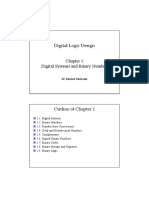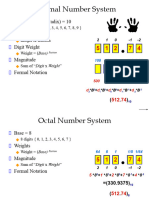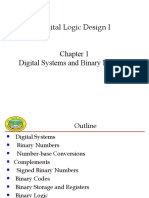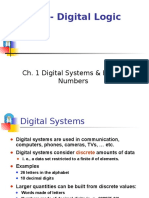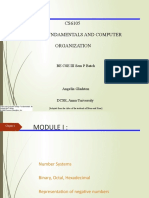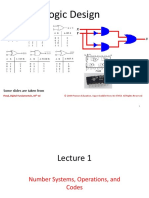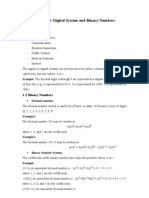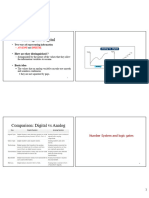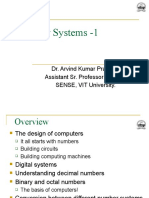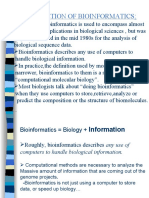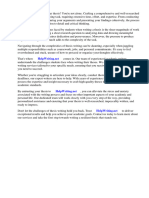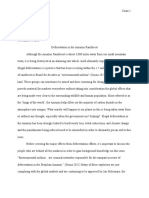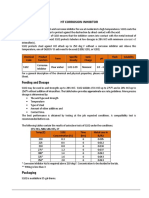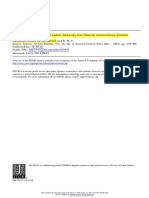100% found this document useful (1 vote)
75 views56 pagesData Communication
This document discusses different number systems including binary, decimal, octal, and hexadecimal. It provides examples of converting between these number systems, as well as performing arithmetic operations like addition, subtraction, multiplication, and division in binary. Binary coded decimal and gray code are also mentioned. The key concepts covered are number-base conversion, binary arithmetic, and different methods for representing signed numbers like one's complement and two's complement.
Uploaded by
JohnnyCopyright
© © All Rights Reserved
We take content rights seriously. If you suspect this is your content, claim it here.
Available Formats
Download as PDF, TXT or read online on Scribd
100% found this document useful (1 vote)
75 views56 pagesData Communication
This document discusses different number systems including binary, decimal, octal, and hexadecimal. It provides examples of converting between these number systems, as well as performing arithmetic operations like addition, subtraction, multiplication, and division in binary. Binary coded decimal and gray code are also mentioned. The key concepts covered are number-base conversion, binary arithmetic, and different methods for representing signed numbers like one's complement and two's complement.
Uploaded by
JohnnyCopyright
© © All Rights Reserved
We take content rights seriously. If you suspect this is your content, claim it here.
Available Formats
Download as PDF, TXT or read online on Scribd
/ 56




